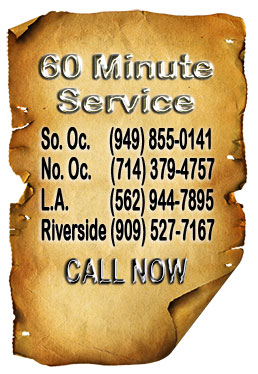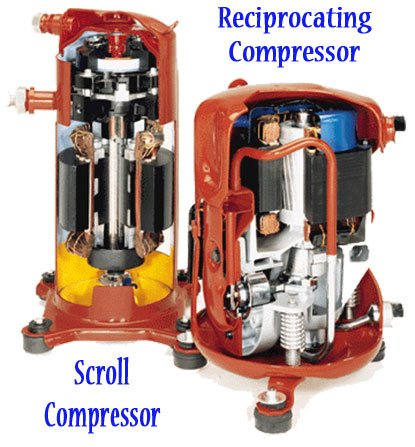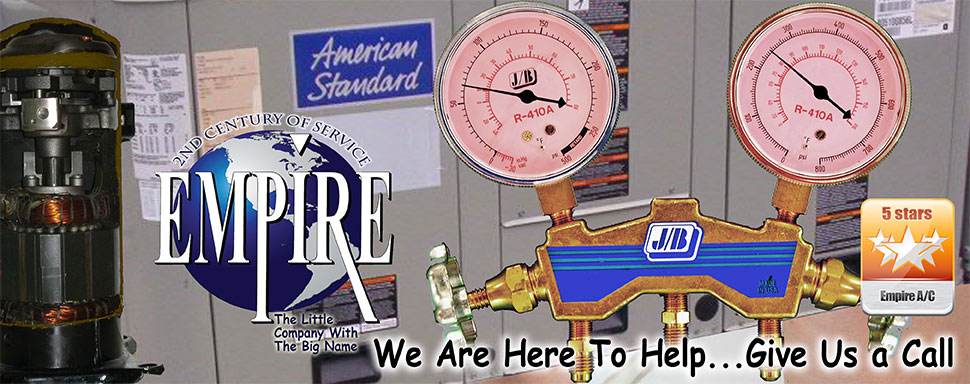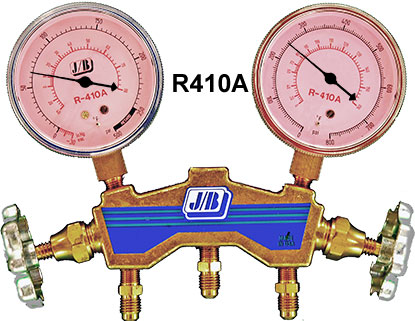 Your Freon uses Freon to circulate through the outdoor unit and the indoor unit. Your Freon uses Freon to circulate through the outdoor unit and the indoor unit.
 Think of your outdoor air conditioning unit as a large pump that pumps Freon throughout the system. The outdoor air conditioning compressor pumps the Freon into a very hot gas form. The Freon then travels throughout the condensing unit (outdoor air conditioner) coils and cools down from the flow of air across the coils generated by the outdoor fan motor. Think of your outdoor air conditioning unit as a large pump that pumps Freon throughout the system. The outdoor air conditioning compressor pumps the Freon into a very hot gas form. The Freon then travels throughout the condensing unit (outdoor air conditioner) coils and cools down from the flow of air across the coils generated by the outdoor fan motor.
During the course of the cooling process the Freon changes state. It condenses into a liquid. This is the reason that the outdoor air conditioner is called the condensing unit. Just as soon as the Freon starts to become a liquid the Freon is said to be “saturated with heat”. The Freon is still quite warm at this point and it still keeps losing temperature degree by degree. Each degree that the Freon loses temperate is called one degree of sub cooling. Sub meaning below the fully saturated heat we just discussed.
Most Air Conditioners are Have 8 to 14 Degrees of Sub Cooling
Now the Freon enters the line set, the copper tubing from the outdoor air conditioner to the indoor evaporator or indoor cooling coil. Once the Freon reaches the indoor cooling coil (evaporator coil) it becomes restricted by a flow control device. That flow control device is now a thermostatic expansion valve. Older units had fixed orifice controls and capillary controls.
The Thermostatic Expansion Valve
This is a very special flow metering device. It increases and decreases the amount of Freon entering the coils by measuring the temperature of the Freon leaving the evaporator coil (indoor cooling coil). If the Freon is too warm the thermostatic expansion valve opens up and allows more Freon through the cooling coil. If the Freon is too cool it restricts the flow of Freon. The valve is constantly hunting for the perfect amount of Freon through the coil.
Freon Travels Through the Evaporator Coil
When the Freon enters the coil it is in a liquid form. As the Freon gains temperature the Freon starts to evaporate into a gas. This is why the indoor cooling coil is called an evaporator coil. Once the Freon starts to become a gas it is once again “Saturated” meaning at that pressure the Freon has all the heat it is going to hold. This is where a change starts. The Freon is still very cold and the surround air passing through the evaporator coil is warmer. The Freon starts to increase in pressure and temperature. Every degree of heat it gains past the saturation temperature is called one degree of superheat.
The Process Repeats Itself and You Have Air Conditioning, but everything has to work properly. If your air conditioning system is low on Freon, you don't have air conditioning. What you have is an electrical bill. If you don't have enough air flow accorss the evaporator coil, you don't have air conditioning, you have an ice machine. If your air ducts are not sealed, you don't have air conditioning, you have an attic ventilation fan.
We can help. Print out that coupon at the top of the page for a $39 whole system evaluation and tune up. You'll be glad you did.
Read More Testimonials
 They made sure that all the details were correct before proceeding with the job to ensure their accuracy. They made sure that all the details were correct before proceeding with the job to ensure their accuracy. 
~ Sandi Banta
 His warmth and professionalism are a welcome combination when this quality is so lacking in most. I look forward to a continued professional relationship with your firm. His warmth and professionalism are a welcome combination when this quality is so lacking in most. I look forward to a continued professional relationship with your firm. 
~ Kay Pitsenberger
 Just wanted to express my appreciation to your crew for the fast and professional job they did. Just wanted to express my appreciation to your crew for the fast and professional job they did.
~ Ron Eggers
|



 Your Freon uses Freon to circulate through the outdoor unit and the indoor unit.
Your Freon uses Freon to circulate through the outdoor unit and the indoor unit. Think of your outdoor air conditioning unit as a large pump that pumps Freon throughout the system. The outdoor air conditioning compressor pumps the Freon into a very hot gas form. The Freon then travels throughout the condensing unit (outdoor air conditioner) coils and cools down from the flow of air across the coils generated by the outdoor fan motor.
Think of your outdoor air conditioning unit as a large pump that pumps Freon throughout the system. The outdoor air conditioning compressor pumps the Freon into a very hot gas form. The Freon then travels throughout the condensing unit (outdoor air conditioner) coils and cools down from the flow of air across the coils generated by the outdoor fan motor.